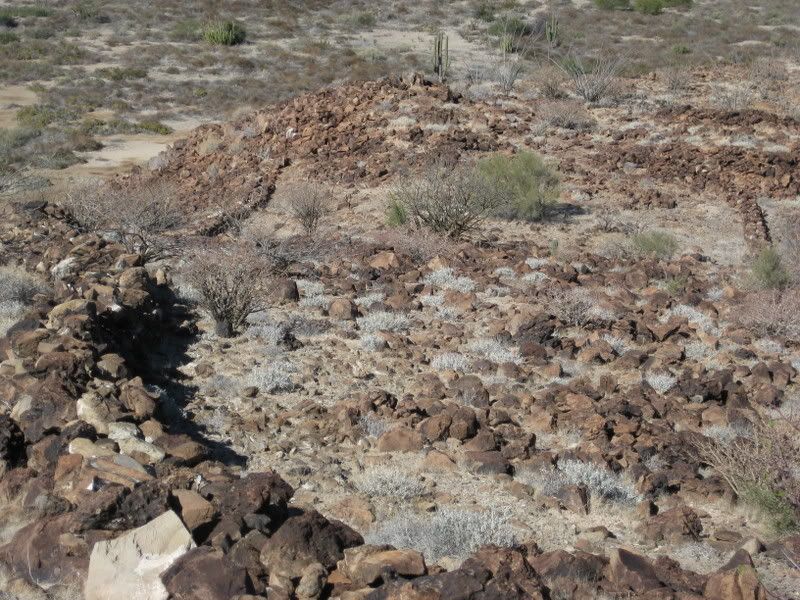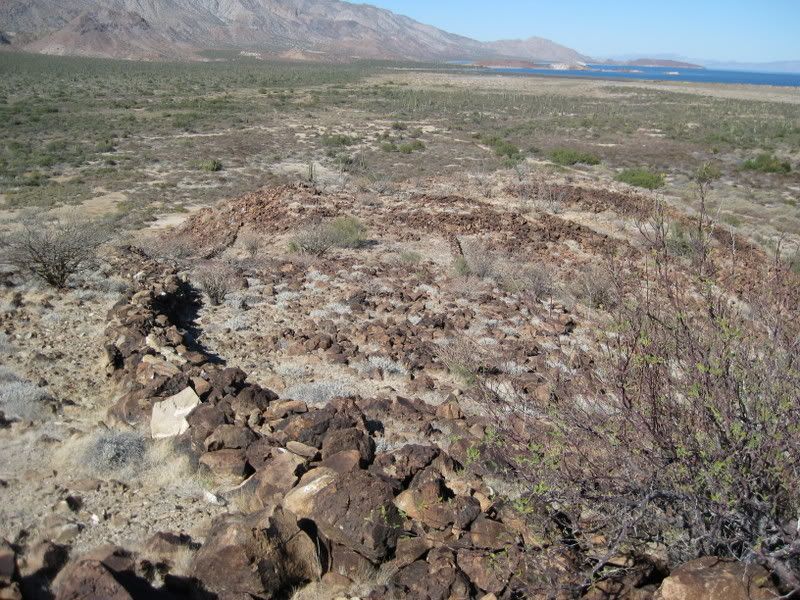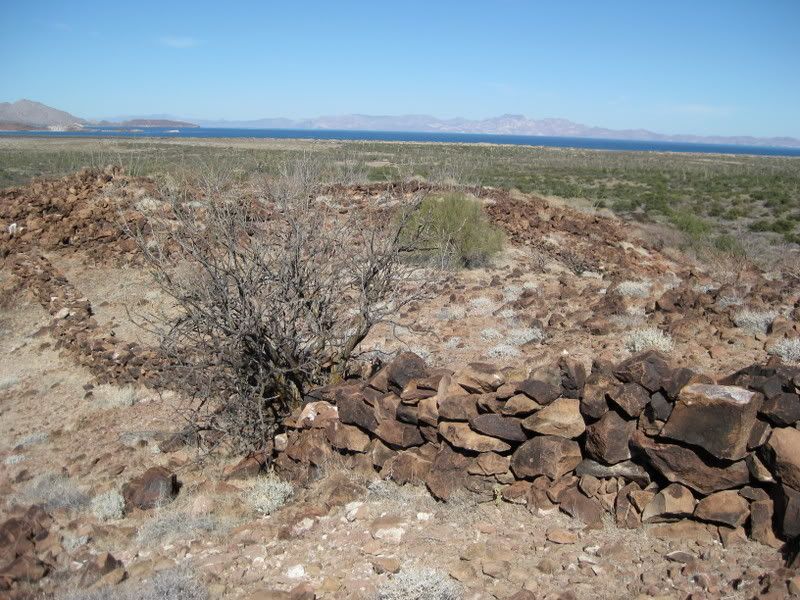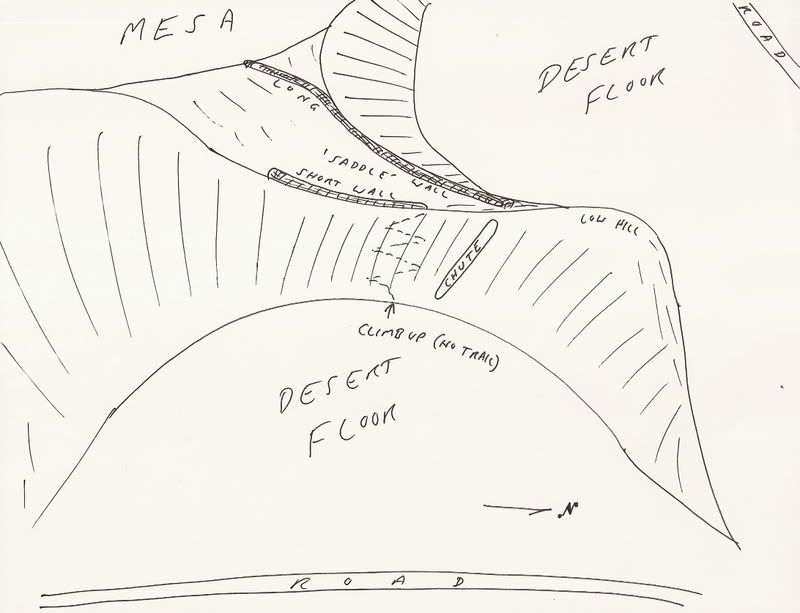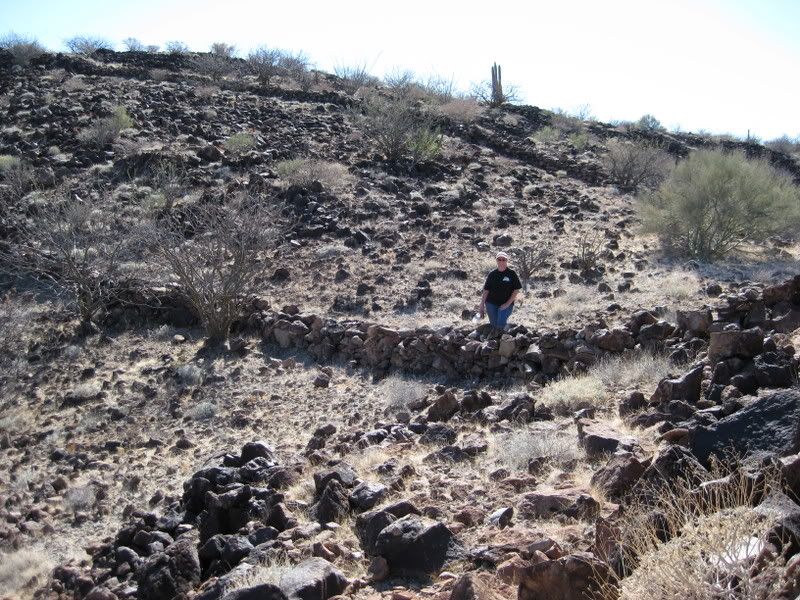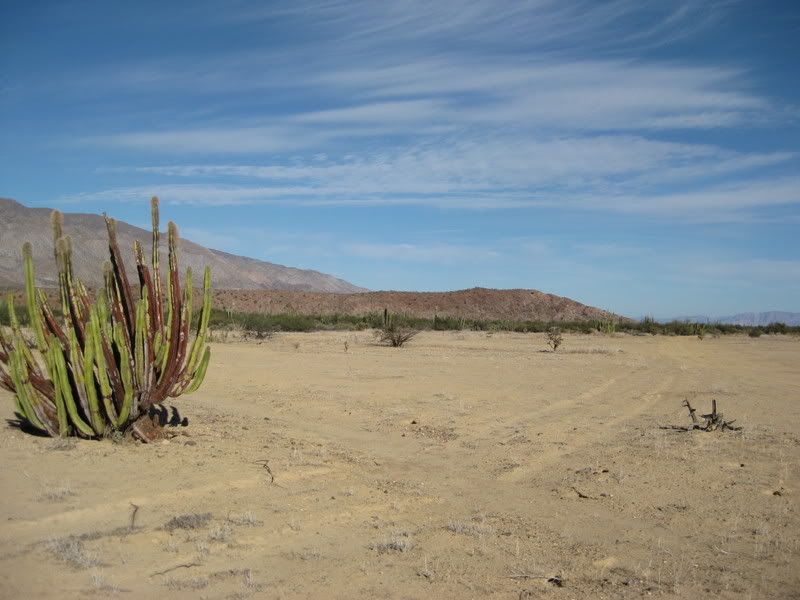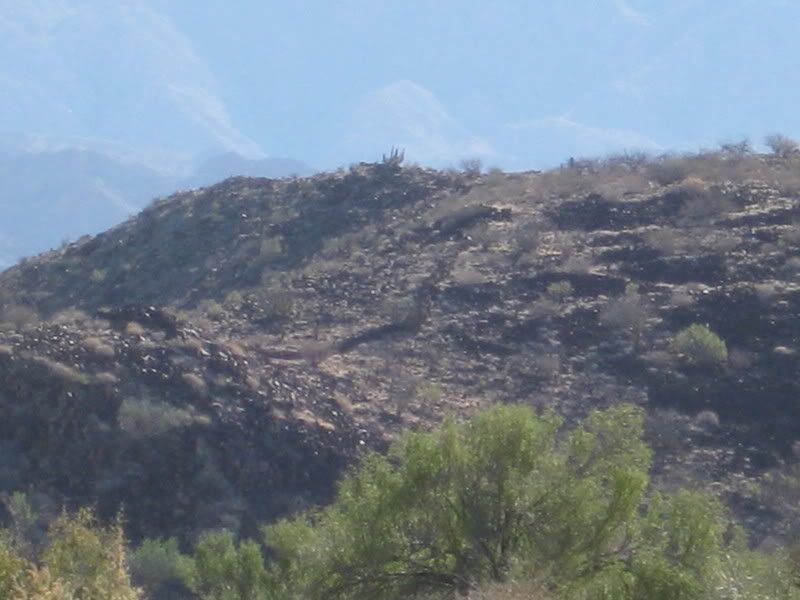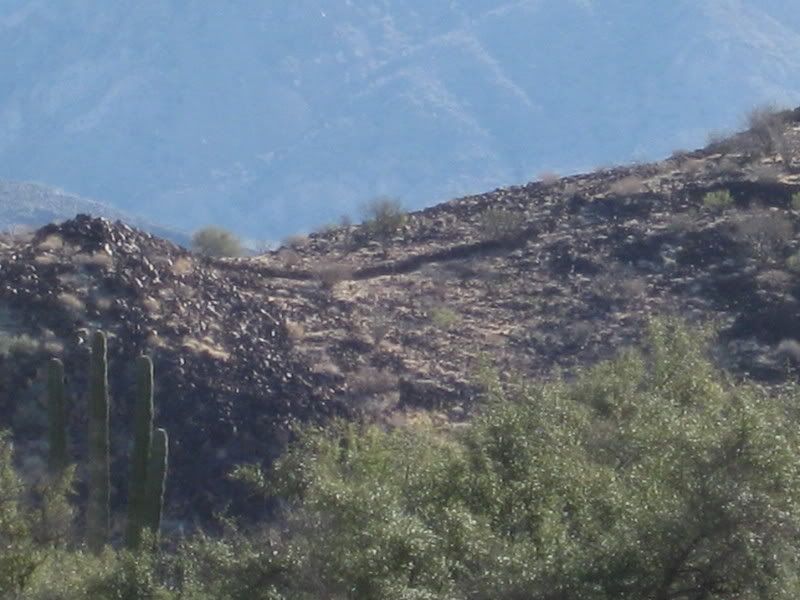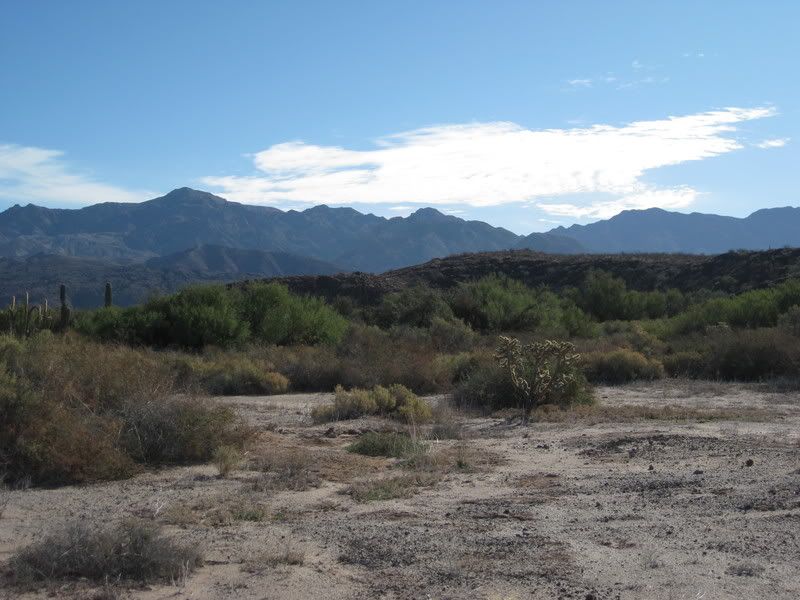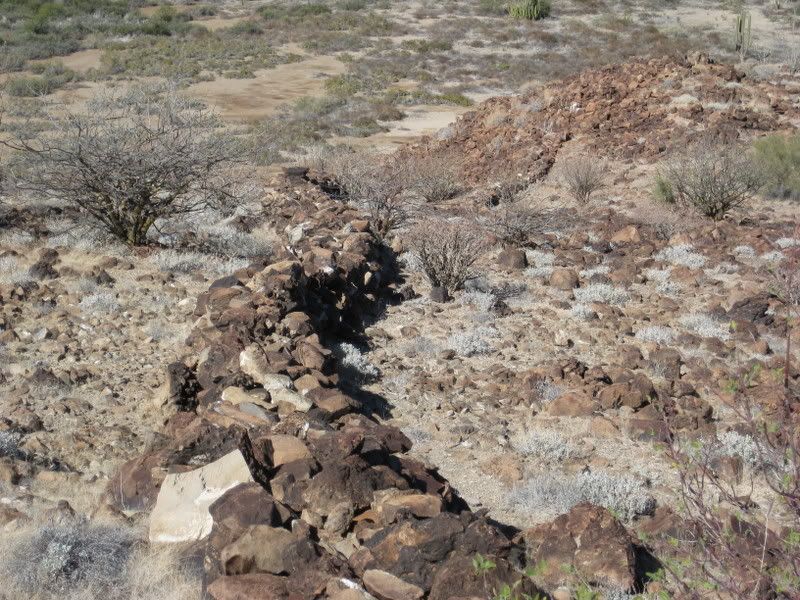Here is a zoom in on that cleared 'chute' or slide that I thought may have been where supplies for the Spanish fort on top (or whatever was on top) were dragged or pulled up by rope...
This is very steep... we climbed up/ and back down just to the left of it, because using rocks to hold or step on seemed easier, it was that steep.
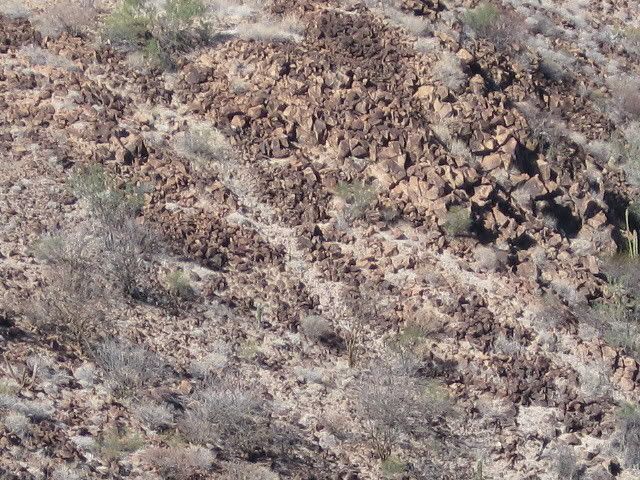
What do you think???







